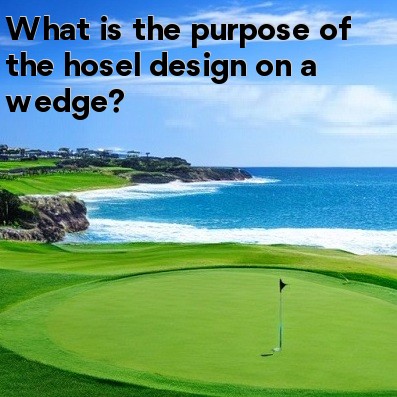
The hosel design on a wedge plays a crucial role in the performance and playability of the club. The hosel is the part of the clubhead that connects the clubface to the shaft. It is primarily responsible for determining the lie angle of the club, which in turn affects the trajectory and direction of the ball.
One of the main goals of the hosel design on a wedge is to position the clubhead correctly at address to promote an optimal impact position at impact. A hosel with the correct lie angle allows the clubface to be square to the target line, ensuring that the ball flight is as intended.
Additionally, the hosel design affects the center of gravity (CG) location of the clubhead. The CG plays a crucial role in determining the trajectory and spin of the ball. A hosel design that moves the CG lower in the clubhead can help produce higher shots with more spin, ideal for shots around the green that require precision and control.
Furthermore, the hosel design can also influence the overall feel and performance of the wedge. Some hosel designs offer adjustable options, allowing golfers to customize the lie angle to match their swing characteristics and preferences. This adjustability can help optimize ball flight and enhance shot-making abilities for different playing conditions and shots.
It is worth noting that there are different hosel designs in wedges to cater to varying player needs. The most common hosel options include the standard hosel, the double bend hosel, and the offset hosel.
- The standard hosel is the most traditional design, typically used in wedges with a more neutral or upright lie angle. It provides a clean appearance and offers stability and control, making it suitable for players with a consistent swing plane.
- The double bend hosel is characterized by a bend that aligns the shaft more in line with the clubface. This design promotes a slight offset, which can help golfers who tend to push or slice the ball. The offset hosel encourages a closed clubface at impact, resulting in a more straight ball flight.
- The offset hosel is designed with the shaft positioned slightly forward from the clubface, creating an offset appearance. This design helps eliminate or reduce the effects of slicing, as it encourages the player to square the clubface at impact. It is particularly beneficial for golfers who struggle with a slice or those who need help generating a higher trajectory.
In conclusion, the hosel design on a wedge serves multiple purposes. It determines the lie angle, influences the CG location, and can provide adjustability options. The hosel design ultimately affects the performance, playability, and feel of the club, allowing golfers to optimize their shots and improve their overall game.





